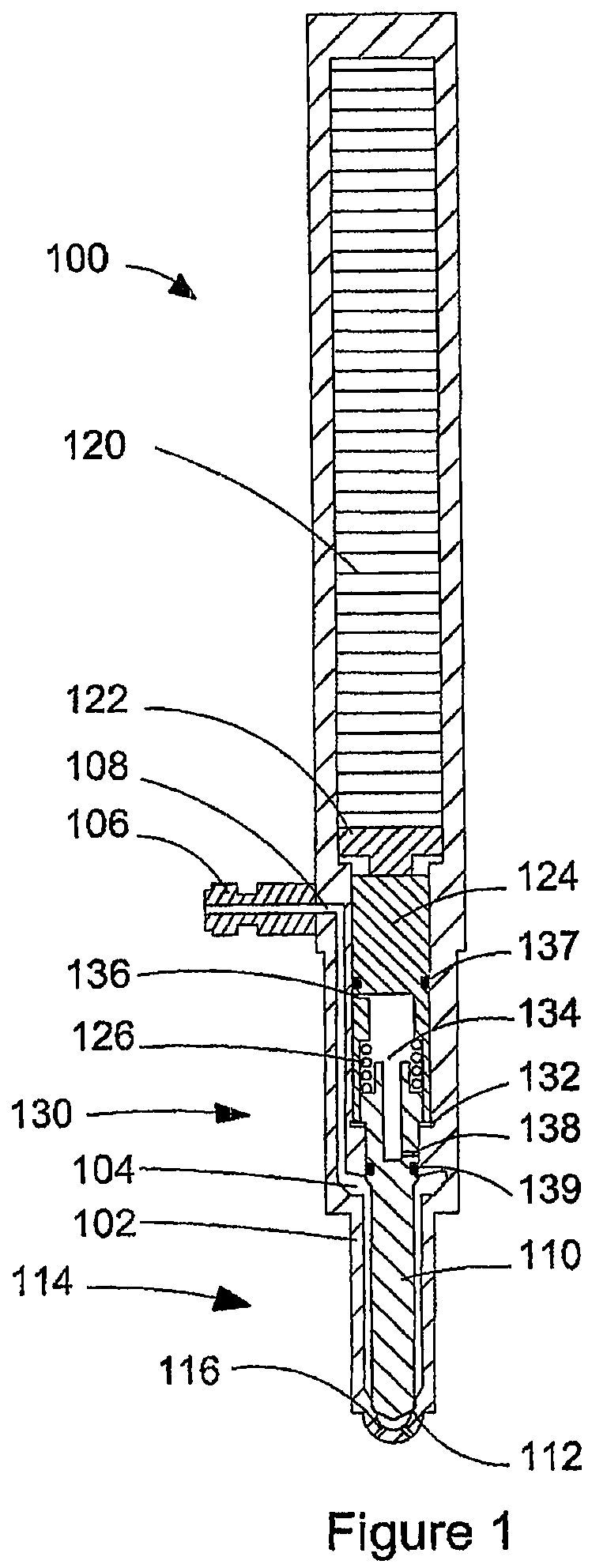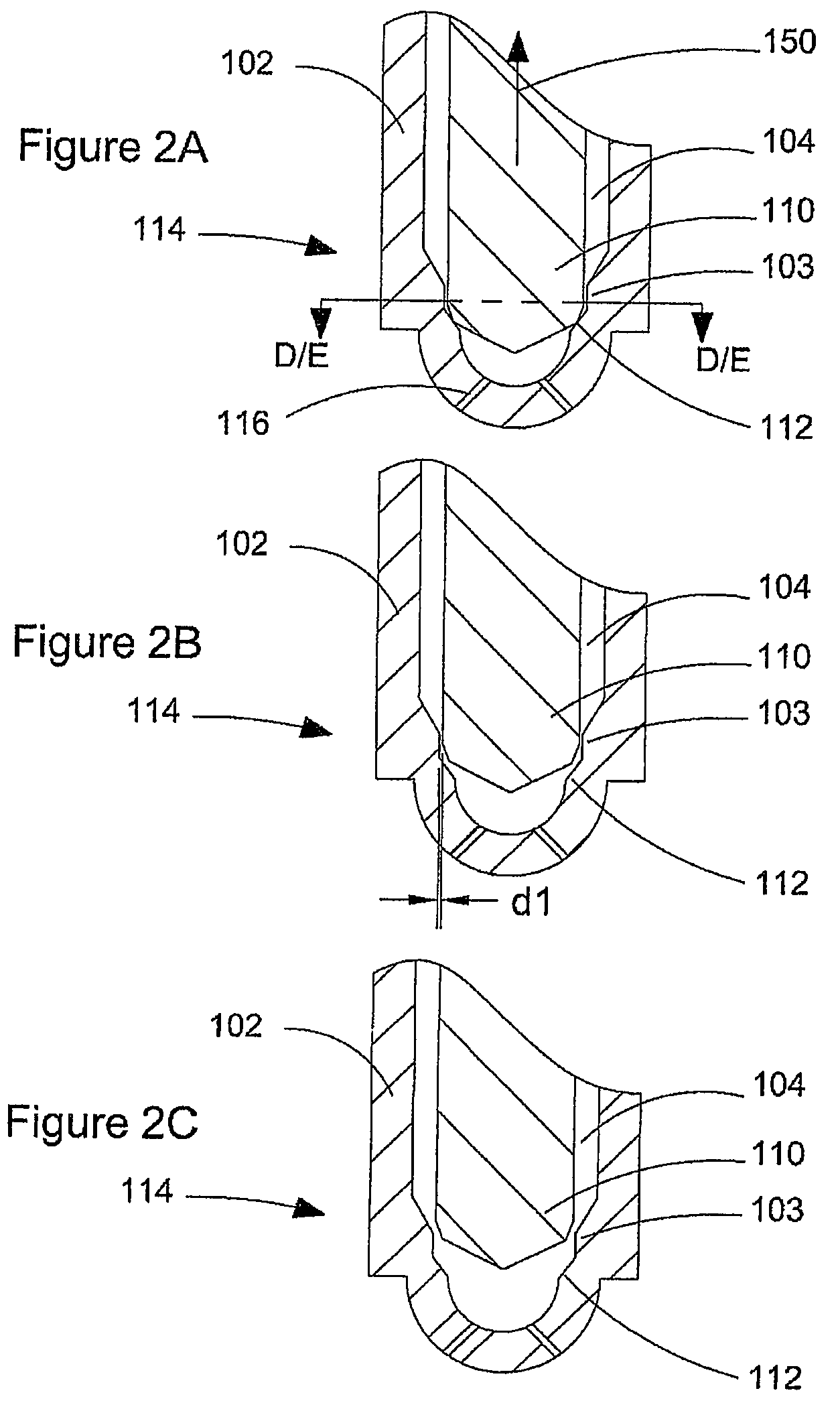Fuel injection valve
a fuel injection valve and valve body technology, applied in liquid fuel feeders, machines/engines, engine components, etc., can solve the problems of unstable operation, difficult task of known control strategies, and difficulty in controlling the quantity of fuel, so as to reduce variability in the fuel mass flow rate and maintain the constant mass flow rate
- Summary
- Abstract
- Description
- Claims
- Application Information
AI Technical Summary
Benefits of technology
Problems solved by technology
Method used
Image
Examples
Embodiment Construction
)
[0049]The schematic views are not drawn to scale and certain features may be exaggerated to better illustrate their functionality.
[0050]FIG. 1 is a schematic cross-sectional view of fuel injection valve 100, which can be employed to introduce fuel into an engine. Valve body 102 houses valve needle 110, actuator 120, and transmission assembly 130. Valve body 102 also defines fuel cavity 104, which comprises fuel passages extending from coupling 106 and fuel inlet 108 through to valve seat 112. Valve needle 110 is movable within nozzle 114 between a closed position at which valve needle 110 is seated against valve seat 112 and a fully open position at which valve needle 110 is spaced furthest apart from valve seat 112. When valve needle 110 is spaced apart from valve seat 112, fuel can flow from fuel cavity 104 into the engine through nozzle 114. In the example illustrated by FIG. 1, fuel exits nozzle 114 through orifices 116. In the case of an outward opening valve needle (see for e...
PUM
 Login to View More
Login to View More Abstract
Description
Claims
Application Information
 Login to View More
Login to View More - R&D
- Intellectual Property
- Life Sciences
- Materials
- Tech Scout
- Unparalleled Data Quality
- Higher Quality Content
- 60% Fewer Hallucinations
Browse by: Latest US Patents, China's latest patents, Technical Efficacy Thesaurus, Application Domain, Technology Topic, Popular Technical Reports.
© 2025 PatSnap. All rights reserved.Legal|Privacy policy|Modern Slavery Act Transparency Statement|Sitemap|About US| Contact US: help@patsnap.com



